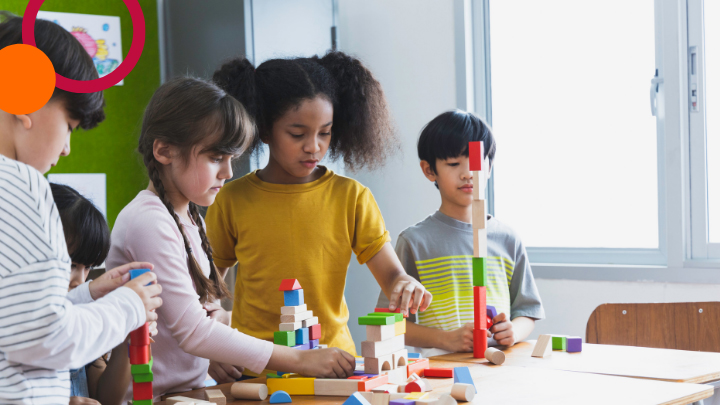We start the school year not only assessing students’ knowledge but also establishing a classroom learning culture. We end our school year by assessing student academic growth, but typically neglect the assessment of and reflection on our classroom culture. Read on to learn about, and access the resources to support, a great strategy to try with all students. It is easy to adjust to your students, and it can result in a ready-made culture building activity to bookend next year’s teaching.
Letter to Self/Classmate
In this activity, students write a letter that reflects on their school year. This can be a guided activity, completely open, or something in between. I use an example letter to model to my students. In this example letter I use a simple format of one great thing, one hard thing, one thing I’d like to try next year and add an opening of a friendly suggestion to myself.
I suggest you write your own example, because students benefit when they have a context to understanding the expectations. If you are concerned that some students might copy your example, adjust the topic so the students are focused on one that is different than yours.
Following the example letter, there is a list with a number of ideas to adapt this activity. Additional resources to support students consist of two checklists, with guiding questions, that students can use for either the letter to themself or the letter to a new student entering your classroom next year. Following each checklist in these documents is a duplicate version, but this one includes sentence stems, so you have a choice. All of the documents mentioned so far can be downloaded to your Google drive or downloaded as a document, and edited to suit your purpose and you students.
Tips for a successful letter project:
- State the purpose. It is important that students know not only the expectations, but why they are doing the activity.
- To link this activity to next year:
- Have students write a letter to an unknown member of next year’s class. Now you have part of a ready made activity for next year.
- Combine the activity just above by next having those same new students write a letter to themselves to be opened at the end of the school year. This aligns to goal setting, but it is also a way for you to get to know your new students.
- Another way to link the current activity to next year is to write your own letter(s) as students pen theirs. It could be to your future self, to your current students but opened at the start of next year, to the teachers who will receive your students, and/or to your incoming class.
Further Personalize
Have students create letters to themself (or other) as a video. Ideally, students should prepare by going through the a guided writing exercise, but less formally. A recording tool I’d suggest is FlipGrid. The free version allows you to adjust the settings so your students can see everyone’s video, or just their own video. If your school uses Chromebooks, adding the free Screencastify app allows students to push a button, select the viewpoint (the screen, the camera, or both), and then record. The recording is automatically stored on the computer. Most laptops are now equipped with cameras, microphones and their own recording tool, and using the Chrome browser, you can use the same process as Chromebooks. There are also a number of other free screencast recording tools to choose from that work on every platform.
No computers? No problem
iPads have the same recording function everyone is using on their smartphones. No computer technology at all? Use a digital camera with a recording function. Many schools own at least one that can be signed out. Set up your “recording studio” as a station activity in a quieter location, and have students go record one-by-one. Ultimately, you want to put video online, so that you can share the links to students at the start of next year. YouTube, now a part of Google, is a free site if you have a Gmail or Google account that is an easy to use location to store video. You alone control who can see each video.
Additional Tips:
- You may want to set some time limit, and use a timer to enforce it. With the exception of FlipGrid, the amount of time other programs allow—even for free—can be quite long.
- To give students some choice in their letter, you could set up an organizer like the two checklists shared above, and students select from the guiding question choices.
An Alternative to the Letter: Survey
It’s not only college professors who benefit from surveys. All teachers, no matter what grade level is taught, should ask students for feedback. I’d suggest doing surveys throughout the entire school year, to learn about student interests, what is and isn’t working from their perspective, and to get their input (and sense of ownership) into what is happening in their classroom. Surveys also trigger reflection, and what better time than the end of the year to ask students to think about their learning experience? There are loads of great examples of student surveys, free online and easy to locate using a simple search. One I’d suggest everyone read is End of Year Surveys with Google Forms. First, what Ben Landers (a/k/a The PE Specialist) shares will work for everyone. Also, he argues persuasively as to why it is important to survey students throughout the year. As well, Ben suggests a tool to conduct the survey that I too recommend: Google Forms. (Video: Basic Google Forms Tutorial).
Here are some other useful resources:
Here are some suggestions for surveying early elementary students.
- Read the survey aloud question by question.
- Sort students into small groups.
- Have the reader be an adult other than their teacher.
- Construct questions so that students need only understand “yes,” “no,” and “maybe” to respond.
No matter what grade level you are teaching, I’d recommend:
- Modeling the process using a question or questions that aren’t on the survey. Keep it real. The Basic Google Forms tutorial video mentioned above models a survey about pizza.
- Giving students at least one question that is open ended. In my teaching, I always ended with the question, “Is there anything else you want to share?” This question, even at the end of an academic survey (or quiz), has given me some of the best insights, and in one case I received critical information about a child’s welfare.
In closing, the last tip that I gave (just above) reminds us of how important it is for students to have a voice in their classroom. If giving students a multi-question survey or a letter to self or unknown classmate isn’t practical or possible, I urge you to ask your students to respond to this prompt:
- What is one thing I should know about you? (start of year)
- What is one thing your next year’s teacher should know about you? (end of this year)








